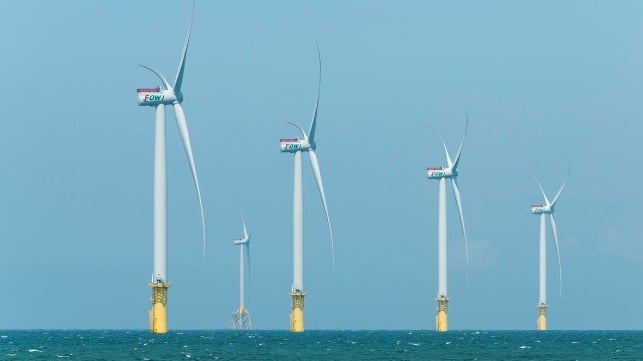Stalking The Nightmare of Control by Invecchiare Selvatico
Invecchiare Selvatico Reflects on War of Dreams: A Field Guide to DIY Psy-Ops by Jason Rodgers (Autonomedia 2024)
In my review of Jason Rodger’s first book, Invisible Generation: Rants, Polemics, and Critical Theory Against The Planetary Work Machine (see anarchistnews.org/content/‘cause-i-see-you), I wrote: “As they ponder the banality and degradation of modern life, non-ideological anarcho-primitivism meshed and mashing with anarcho-surrealism, critiques of contemporary and historical philosophical pitfalls and their self-referential trappings, and so much more, Jason emotes provocation. In a time where almost anything remotely interesting or transgressive has been absorbed, reconstituted, and sold back to the anemic herd willing to lap up just about anything served to them and call it “radical”, Jason still finds edges that have not been smoothed down, still pokes, tears, and rips at the silicone and ideological flesh of control, still engages in psychic warfare against civilization…. It is rare in a world of posers, of fakes, of superficial trend surfers, of programed zombies, of reified rebels, of performative soldiers, of plastic identities, and such, to find someone who critically grapples with complexity and nuance and is not afraid to dip toes into the dangerous, a true free-spirit, an anarchist, or at least what that once meant before it all became so safe, so comfortable, so predictable, so non-anarchist. And when I am pleasantly surprised, usually by accident, that my paths come across one of these kindred spirits and their creative little explosions into the world, I am moved to respond. I begin to realize that I am not alone. There are others out there who are still alive, who have not been lobotomized and neutered by this displaced and dispirited post-modern techno-reality. I see you.”
Well, War of Dreams: A Field Guide to DIY Psy-Ops, Jason’s follow-up offering, not only confirms my suspicions, and dare I say hopes, but hits me smack in my wet thinking flesh with even deeper, more expansive, more clever, more biting analysis, and provocatively belly-shaking laughter than I had even imagined. Well done. Read these two books and call me in the morning (on my landline, it is all I got). I am sure there will be no shortage of things to discuss.
As in their previous book, War of Dreams combines Rodger’s dense and provocative collages and flyers with detailed essays and other assorted wordplay on a significant spectrum of subjects and over a decent chunk of time. I am not sure of their process for linking writings with collages (topic, chronology, chaos theory, drunken blind darts, etc), but they fit perfectly together as an unfolding journey of critique. Similar to their first book, and throughout their collage and flyer project, Campaign to Play for Keeps (CtPFKs), Jason seems to have rejected the current trend to oversimplify, reproduce, and dumb things down in analysis and presentation. Jason crams so much content, both visual and in critique, that a highly complex density of meaning is created, what I view as an anti-meme (or a least what memes have come to mean today). The writing and subjects are at times moderately complicated, but Jason manages to express and explain in a way that reads clearly and smoothly, never a chore, and always interesting. The range is phenomenal. Not yer one trick ideological pony here. The only thing you can pin Jason down on is their unabashed heretical digging, prodding, and poking, as well as their insatiable appetite for reading (from actual dead-tree flesh and ink books), in every direction that can be conceived as interesting, an immoral (amoralists are almost as big of cop-outs as atheists) and precise mesh of ideas filtered through a creative, perceptive, and intense person. Although Jason does seem to have some personal favorites, like Walter Benjamin, Jerry Mander, The Situationists, Bob Black, Freddy Perlman, Hakim Bey, Feral Faun, William Burroughs, John Zerzan, Renzo Novatore, Genesis P-Orridge, and a whole lotta old school and hardcore punk, they never get old and they bring them into the analysis in fresh ways, clever angles, and from a place of comprehension, unlike the googled and wikied name-dropping turds who love to puke out phrases and unbaked concepts they haven’t even begun to digest (I can still see the nuts and corn you morons).
The chorus: “Can we clone this mutant?”
No.
“Why Not!” they cry.
Because this is someone who is still very much alive and kicking and unique and breathing, someone who is present in this world with their eyes pried wide open. They engage in living critique, not dead games, not redundant gestures and ptsd ticks. And not online.
One of the many things I love about Jason’s writing is that I continually expand my vocabulary with every page. Who knew a word like “teledildonics” existed and how perfectly it names cybersex? Jason uses this evocative language as they come out swinging at social alienation and the technologies and processes which deepen, expand, and accelerate its control in their opening piece “Alienation Cycles Of The Identity Image”. This essay sets a solid tone for the book, only slightly distracting for me by a subtle attitude towards what feels framed as an almost obligatory, more active refusal over supposedly more passive escape. In this regard, Rodgers has previously called what they perhaps at times perceive as a more dormant, stagnant, self-referential, or even resigned response as “quietism” (which comes up more specifically further in the book). It is a term I think that can be too liberally applied, especially when its really hard to know what people do in their real world, away from print, cameras, and screens, in the middle of nowhere, between each other, underground, anonymously, without report-backs, away from scenes, behind fences and doors, in locked damp basements or dim dusty attics, in minds and hearts, off-the-grid, obscured by costumes and masks, up my nose, in the darkness, away from peeping eyes and measurements of the spectacle that is society. There are lots of ways to be willfully disobedient and to attack. Rejection and refusal can occur in many ways, including what may be termed as certain kinds of escape (either brief and temporary or more extended). I know Jason gets this. It is clear in so much of their writing, but what feels sometimes like a more overt call-to-duty may still go unrecognized by many with touches of lingering revolutionary residue and still a slight smear of social baggage along these lines. This is one of the few places Jason and I seem to meet across the creek a bit, but I actually enjoy the pushing and pulling, tussling and tugging. I find it inspiring, provoking, and challenging. I am all in.
Section One: Media is an analytically-leaning, yet not overly detached, attack on the post-modern cyber-world of global communication and control. Some of it feels like a freshening up and recontextualizing of the Situationists within the current cyber-hell (“Cyberia” as Jason cleverly describes the barren wasteland most have self-banished themselves to), but from a specifically anarchist and anti-civ perspective. In “The Object of Alienation and Reification” Rodgers examines the almost totalizing power of the technologically mass-ified illusion and its all-consuming affects on understanding and meaning. “As the world becomes more and more saturated with images it becomes more difficult to draw conclusions… Everything becomes fake news. The image is objectified into just more discrete components to be reassembled as entertainment.” Again, Jason’s proposal for a disconnection from the tentacles of fiber-optic mass media and their DIY prioritization seems to be the most relevant pushback to this mostly all-invasive and almost all-encompassing force.
Section Two: Anti-Media has a more nuts and bolts, active-oriented approach. This was one of my favorite sections and lets you really get to know what motivates Jason, their DIY attitudes, influences, their love of zines, punk rock aesthetics, deconditioning and decentering activities, and strategy of chaos and Dis Information, which Rodgers explains as “the scattering of the formation, allowing elements to reform in new, unpredictable, and dynamic ways.” This section is not only filled with their usual (unusual) collaged flyers, drawings, and essays, but also very playful and pointed correspondence, letters to editors and zines, stories, reviews, and some really off-the-map and forgotten or only marginally known micro-histories. I specifically appreciated Jason’s shinning the light on Susan Poe and Gerry Reith, two essential, yet virtually forgotten about, figures in the early incubation of a general perspective that became post-Left anarchy.
“My Date With Susan Poe” is Rodgers “fictionalizing an actual meet-up with a marginal” and offers glimpses into a time, place, person, and attitude that is typically only poorly and superficially understood and mimicked these days. Suzy “Crowbar” Poe seemed like a truly an anarchic unique one. She was a co-conspirator with Rodgers on a zine, a cult formation, some general mayhem, and, according to Jason, was a “butt sniffer”, oh, and she also put out Popular Reality, a staple of radical deviants and early post-Left anarchist appetites, with all the usual seemingly compulsory controversies (but more about all that in future Jason Rodgers releases).
Even more enlightening for me was “Gerry Reith’s Terminal Clarity”, a review of a compilation of Reith’s writings put out by Nine Banded Books called Neutron Gun Reloaded: a Gerry Reith Reader. It recalled for me this barely mentioned yet crucial embryonic element who helped facilitate the particular version of anarchy that I would dive into in the late 90s, but someone I knew almost nothing about. After reading Jason’s piece I quickly asked my ol’ pal Staplecide if he had heard of Neutron Gun, of which he had multiple copies of different editions. Reith seems to be an invaluable lost piece in the puzzle for many of my generation of anarchists going forward. In his very short and volatile life (he ended it abruptly at the age of twenty-five with a bullet to his head at his typewriter in 1984), Gerry seemed to have provoked, offended, picked apart, and smashed politics, complicity, collectivism, and society with a cynical “post-right anarchist” individualist OG-edge-lordy transgression that is so desperately needed today as one of many important infusions (Sorry you thin-skinned over-sensitive lil’ neo-emo liberal-lefties, its true, but that’s another story). Unlike many of his contemporaries (and most anarchists today), Reith entered anarchy from a libertarian background, which probably contributed to his very interesting and unique offering. According to Rodgers, “He was a crucial part of the start of a movement towards a new politics, towards a new writing, towards a new form of adversarial media.” Thanks Jason for reminding us, and for passing on the history to those few of us who can still read, and still want to.
Section Three: Politics starts to really cut into the meat of the multifaceted motivations, motions, and maneuvers of control, and some of Rodgers’ proposals for an “insurrectionary guerilla-ontology attack on multiple fronts” to “cause damage that will resonate through the whole totality” as they conclude “Internalized Control (In Hopes of a Short Circuit)”, a concise piece on contemporary forms of systematic power. While “Against Alienated Rationality” offers a sober critique of the “reductive conception of humanity” as well as enthusiastic calls for divergent and resonating infusions of irrationality. Jason accurately sights dada as one historical precedent for the “free sovereign” and “the anarch” to be inspired by in this way. There is so much in this section and the next (Anti-Politics) to keep diving back into again and again, way too much for summing up in review and well worth an in-depth one-on-one investigation. Whether it is work, academia, careers, activism, collectivism, progress, morality, or the misinterpreted, weaponized, or forbidden authors like HL Mencken or Ragnar Redbeard, when Rodgers is dissecting an idea, author, or tendency, they use well-oiled precession tools and maintain the wide-eyed fascination, unconstrained curiosity, and unabashed honesty of a young’n in the basement with a bloated roadkill bunny. That’s how the political is best treated.
Section Four: Anti-Politics follows the biting CtPFKs flyer “Food Not Bombs: Diarrhea for the People!” which asks the politicized culinary questions: “Have you internalized enough guilt to think that you deserve to eat half rotten (but not fermented) produce, handled (but not washed) by junky traveler kids?” and “Do you consider expecting those preparing your food to wash their hands after a bowel movement to be an example of a privilege to be checked?” and responds with the anti-political just dessert: “People are too full of shit. Food Not Bombs can Help! One meal and your system is clear!” Turn the page and Divine’s Invasion Squad takes aim and fires off: “FILTH IS MY POLITICS” as Jason then opens the section with a concise and clarifying distillation: “For every negative about my philosophy and program there is also a positive. You may notice that my positive still contains a negation. I suppose this is an example of a point in which I differ from a nihilist: a nihilist believes in nothing. I, however, believe in negation. Furthermore, this destruction can also be creative. From carrion compost left by negation, imaginal blossoms may bloom.” This is a crucial distinguishing position, one I absolutely resonate with, and Rodgers fleshes it out well in the section that follows. It is a continuation of the previous section’s attack on the political, handled with the same Rodgers’ standard of concision and derision, but from the opposite direction.
The first major piece in this section, “Chaos Is Immanent: Struggle, Ontology, and The Condition Of Freedom” gets to the heart of Jason’s project. It also fleshes out in more detail the subject of minor points of divergence I have had with them over what they term “quietism”. I find their more extended and contextual explanations of this concept more agreeable, nuanced, and useful, yet, in moments, still a bit stuck in the concept of “struggle” for my taste. Although, I think most of the residual divergence to be only partially of substance, and mostly semantical and very close in actual perspective in reference to the goals, inspirations, and tensions concerning the self-willed individual in society. I think this quote from the piece sums up Jason’s admirable motivations quite well: “Hope should be thrown out to begin with, and instead a joy of a life in struggle adopted. Why bother seeking easily attainable goals that are really just more banal miserabilism? Instead I’d like to seek a pataphysical objective, something so wonderful that it has never happened (or at least hasn’t happened since Babylon erected ziggurats). I’d rather lose at the great work than a lifetime of success maintaining a sewer system.” I cannot argue with this at all.
This section contains worlds within worlds of subjects and perspectives, becoming a swirling dervish of ideas connected in very interesting ways. “Feral Magik” is one of these gleaming gems, a spider-webbing pursuit covering vast terrains of the occult, deconditioning, altered states, telepathy, language, rewilding, resistance, and much more with a rigor and enthusiasm deserving of considerable note. In “Consensus Submission Making” Jason aptly critiques the herd mentality and hive mind that most people submit to on a daily basis due mostly, according to Jason, to their internalization of the external authority of society. Rodgers brings their analysis back to the more activist and collectivist of the so-called anarchist milieu who “sit through long-drawn-out-consensus-based meetings with rigid, formalized procedure, easily prone to abuse by politico-pervo authoritarian types drawn to these sort of structures. They join a community of peer pressure and shame, where comrades will pressure them into engaging in behavior they don’t want to engage in, just like they were initially pressured by mass society. They confront the alienation of mass society by submerging themselves into a hive, reduced to a number on a membership roll.” Instead, Rodgers proposes a revolt on every level against the Totality, especially, perhaps, on the micro, in our daily lives, a suggestion I could not agree with more. “Field Studies in Misanthropology”, a subject dear to my little black heart, is a brief and quite personal piece that stems from a very revealing journal entry which includes: “I often find it nearly impossible to relate to people I encounter in my daily life. I can’t relate to anything about them. I find nothing of interest in their interests. When I try to share how I feel, to communicate something about my being, I feel like I might be speaking a foreign language. I speak, but most often I am met by blank stares or mild disgust.” Jason’s response to these very understandable yet potentially crippling misanthropic tendencies in their own and in others’ hearts and minds is a very thoughtful temporary acceptance without an overwhelming submission into despair, and yes, quietness.
This section continues to flow into a very impressive arch through a seemingly unending set of deeply engaging and furthering pieces like “Affinity and Passional Conspiracy”, “The Journey Beyond Anarchism”, “Individuality, Identity, and The Creative Nothing”, “Notes On the Death of the Social”, “Trajectories Against Civilization”, “Uncivilized and Queer: An Anti essentialist Critique of Gender”, “Sodomy and Sigils In the Circle Pit” and much more to sink your ravenous feral fangs into. The section concludes with one of my favorite pieces in the book, “Escapism”. It fleshes out the sometimes touchy subject historically, philosophically, and practically, and comes up with a fairly adjacent assessment to my own, that without an intentional situation to sustain, protect, and nourish us, and without people of deep affinity (yet containing unique and individual difference), our resistance to civilization will not only be limp and fruitless, it will be unsatisfying on so many levels. This terrain is complicated and vast, for sure, fraught with many potential trappings, pitfalls, and leechings, but one worth the dangerous, endless, and satiating lived experimentation. We are not soldiers, we are living beings who need to be filled with a continual vitality to resist civilization and our precious energy needs to be replenished directly and daily in our lives. Surrogate activities and might-sucking distractions magnate all around us as we attempt to be at home in our world.
And finally, Section 5: Schiz/Misc wraps it all up with an assortment of oddities, misfits, and loose ends. Personally, for me this concluding section was slightly less interesting, but I appreciate Jason’s enthusiasm for their endlessly veining-out unconventional interests and it does help dissipate the heaviness of the previous sections into a more dream-like and playful goo, sending us all on our limitless little ways. In this almost afterward-like section we rub elbows with visionary artist Paul Laffoley and their psychotronic art, chomp down some amanitas with a shamanistic and hermetic Santa, and get a few other entertaining conspiratorial tutorials. Most relevant to me was the opening statement to the final section, pulled out in part for the back cover: “I am interested in ideas that don’t fit… The limitations of an alien reality must be smashed. It isn’t important to reach the masses, instead we want a growing lunatic fringe, schizoid anarchs who are uncontrollable and irresistible.” Delightful.
If it were not for the likes of Jason Rodgers and a ragged assortment of other such kindred deviants scattered about I would have left anarchists behind long ago. These rare crackles, sparks, and glimmers lighten my darkening heart, blow out my dusty mind, and rattle my creaking bones. They put a crooked skip in my step and rowdy stomp in my boot. They don’t delude, distract, or soothe with such false balms as hope or lofty philosophical ideals, but instead invigorate with a potent rejection and intoxicating honesty so sorely needed. It hurt so good.
Jason is no mere propagandist, that is a project for politics and power. Rodgers is a provocateur of the highest degree and a psychic warrior of great finesse. In their attempt to corrupt the perceptions and attitudes of individuals, groups, and powers, Jason’s psychological operations have no limits, but don’t expect the played out and obtuse knuckle-headed full-frontal attack! attack! attack! No, Rodgers is like a brilliant little termite, chewing away the rotting structures and shitting out the detritus for dreams to grow in as the mutherfucker crumbles from within. Chew!
“I know life is a game and I intend to play for keeps.
Time to get serious about joking and work at play.
It is time to play hard and play the ultimate game, war games.”
- Campaign to Play for Keeps
————
Jason Rodgers can be reached at:
Campaign to Play for Keeps
PO Box 701 Cobleskill, NY 12043
(no email)
Invisible Generation and War of Dreams
are available from Jason directly
or
autonomedia.org
or
underworldamusements.com
Invecchiare Selvatico
was a primary editor and writer for Green Anarchy magazine
and is the author of Black Blossoms At The End Of The World (LBC)
available from underworldamusements.com
Contact: nazelpickens@gmail.com
PO Box 316 Williams, OR 97544
*Both Jason Rodgers and Invecchiare Selvatico (as well as some other interesting deviants)
can be found writing for the preeminent anti-civilization anarchist publication:
OAK JOURNAL - PO BOX 485, WV 26851 - oakjournal@protonmail.com








